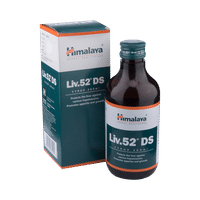Anset O Tablet

food interaction for Anset O
alcohol interaction for Anset O
pregnancy interaction for Anset O
lactation interaction for Anset O
food
alcohol
pregnancy
lactation
Anset O Tablet is to be taken empty stomach.
Take it preferably 30 minutes before food.
None
Take it preferably 30 minutes before food.
None
CAUTION
Caution is advised when consuming alcohol with Anset O Tablet. Please consult your doctor.
CAUTION
Anset O Tablet may be unsafe to use during pregnancy. Although there are limited studies in humans, animal studies have shown harmful effects on the developing baby. Your doctor will weigh the benefits and any potential risks before prescribing it to you. Please consult your doctor.
CONSULT YOUR DOCTOR
Anset O Tablet is probably safe to use during breastfeeding. Limited human data suggests that the drug does not represent any significant risk to the baby.
SAFE IF PRESCRIBED
SALT INFORMATION FOR Anset O
Ondansetron(4mg)
Uses
How it works
Ondansetron is an antiemetic medication. It works by blocking the action of a chemical messenger (serotonin) in the brain that may cause nausea and vomiting during anti-cancer treatment (chemotherapy) or after surgery.
Common side effects
Constipation, Diarrhea, Headache, Flushing (sense of warmth in the face, ears, neck and trunk), Injection site reactions (pain, swelling, redness), Extrapyramidal symptoms, Arrhythmia (irregular heartbeats), Chest pain, Slow heart rate, Hypotension (low blood pressure), Hiccup, Increased liver enzymes, Hypersensitivity, Dizziness, Altered vision, Prolonged QTc interval
Omeprazole(20mg)
Uses
Omeprazole is used in the treatment of heartburn, gastroesophageal reflux disease (acid reflux) and peptic ulcer disease.
How it works
Omeprazole is a proton pump inhibitor (PPI). It works by reducing the amount of acid in the stomach which helps in relief of acid related indigestion and heartburn.
Common side effects
Diarrhea, Flatulence, Headache, Nausea, Vomiting, Increased liver enzymes, Abdominal pain, Itching, Paresthesia (tingling or pricking sensation), Dizziness, Sleepiness, Insomnia (difficulty in sleeping), Vertigo, Dermatitis, Rash, Red spots or bumps, General discomfort, Peripheral edema, Increased sweating, Interstitial nephritis, Joint pain, Muscle pain, Hepatitis (viral infection of liver), Dryness in mouth, Stomatitis (Inflammation of the mouth), Gastrointestinal candidiasis, Blurred vision, Taste change
SUBSTITUTES FOR Anset O
7 Substitutes
7 Substitutes
Sorted By
 Rs. 55same price
Rs. 55same price Rs. 38save 31% more per Tablet
Rs. 38save 31% more per Tablet Rs. 59pay 7% more per Tablet
Rs. 59pay 7% more per Tablet Rs. 55same price
Rs. 55same price Rs. 49.56save 10% more per Tablet
Rs. 49.56save 10% more per Tablet
Expert advice FOR Anset O
- You have been prescribed Ondansetron for prevention of nausea and vomiting caused after surgery or due to chemotherapy and radiotherapy.
- It is fast-acting and starts working within 30 minutes.
- If you vomit within one hour of taking a dose, take another dose.
- Avoid heavy meals and try eating small nourishing snacks throughout the day. Also, sip water regularly to help avoid dehydration.
Frequently asked questions FOR Anset O
Ondansetron
Q. How quickly does Ondansetron work?
Ondansetron starts working within half an hour to 2 hours. It dissolves rapidly into the bloodstream and starts showing its effect.
Q. What are the side effects of Ondansetron?
The most common side effects of Ondansetron are constipation, diarrhea, fatigue and headache. However, these are usually not bothersome and resolve on their own after some time. Consult your doctor if these persist or worry you.
Q. When should you take Ondansetron?
Ondansetron should be taken with a full glass of water, with or without food. It should be used exactly as per the dose and duration advised by the doctor. Usually, the first dose of Ondansetron is taken before the start of your surgery, chemotherapy or radiation treatment.
Omeprazole
Q. Can I take Omeprazole with domperidone?
This medicine can be safely taken with domperidone as no harmful effects have been reported clinically. A fixed-dose combination of these two medicines is also available. Domperidone works by increasing the gut motility and Omeprazole decreases the acid production in the stomach. So, this combination is very effective in the treatment of reflux esophagitis associated with acidity, heartburn, intestinal and stomach ulcers.
Q. What should I know before taking Omeprazole?
You should not take it if you are taking a medicine containing atazanavir and nelfinavir (used for HIV infection). Let your doctor know if you are suffering from any liver problems, persistent diarrhea or vomiting, black stools (blood-stained stools), unusual weight loss, trouble swallowing, stomach pain or indigestion. Tell your doctor about all the other medicines you are taking because they may affect, or be affected by, this medicine. Inform your doctor if you have or ever had an allergic skin reaction with this medicine. It should not be given to children who are less than 1 year of age or whose body weight is less than 10 kgs. Pregnant and breastfeeding mothers should consult their doctor before taking this medicine to avoid harmful effects on the baby.
Q. Can Omeprazole cause diarrhea?
Yes, it may cause diarrhea as a side effect in some people. This is usually not bothersome, but if you experience persistent watery stools that do not go away, along with stomach cramps and fever, get medical help immediately.






















